Internet of Things Statistics 2024 By Operating System, Market Share, Sector, Application, Adoption Rate, Revenue
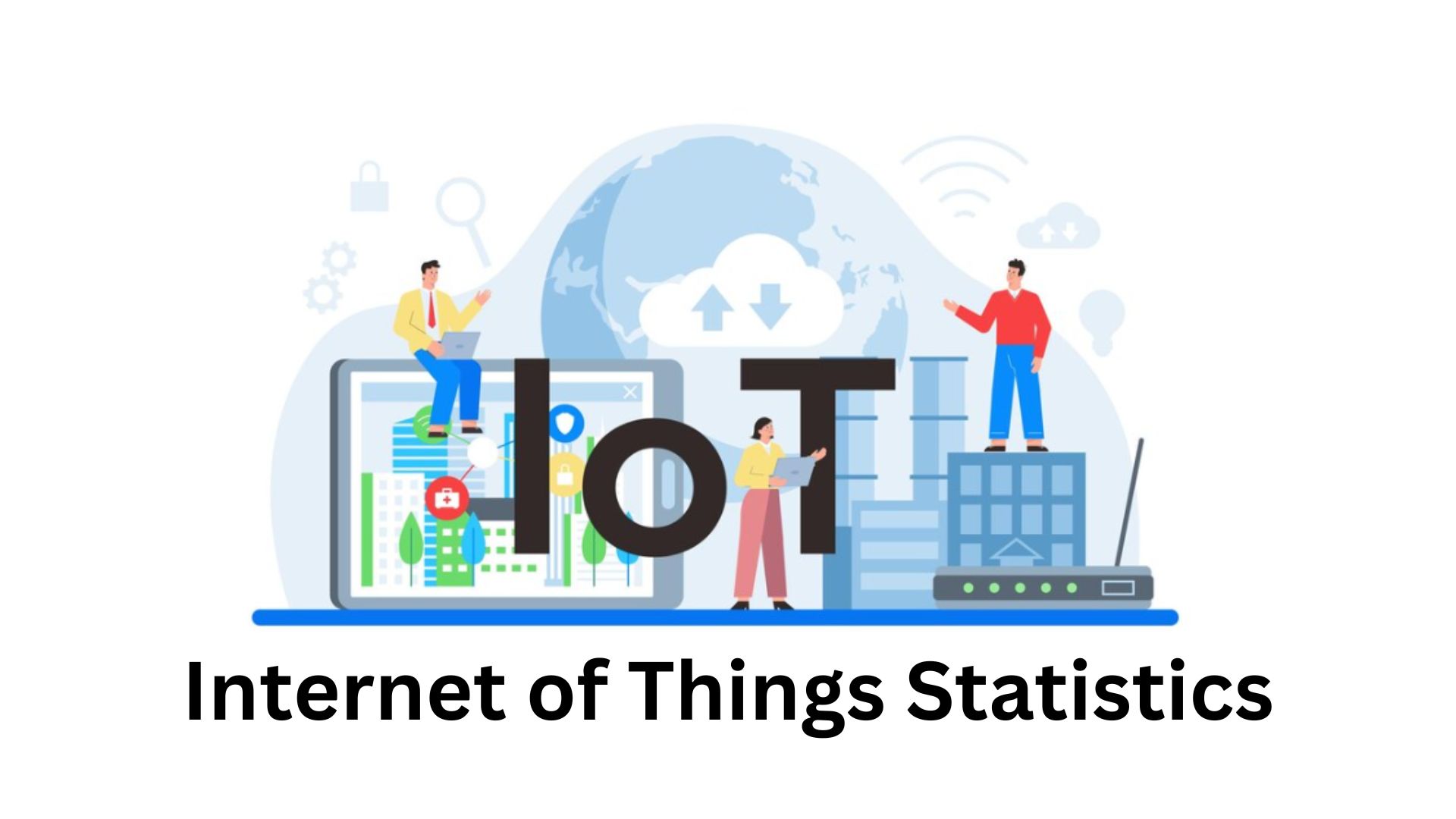
Page Contents
- Introduction
- Editor’s Choice
- You May Also Like To Read
- What is the Internet of Things?
- Internet of Things Facts
- General Internet of Things Statistics
- The Leading Operating System for IoT Development
- By Market Share
- Internet of Things Statistics by Sector
- Number of Active IoT Devices
- Global Internet of Things Connections By Application
- By Adoption Rate
- By Level of Awareness
- By Worldwide Spending
- By IoT Connections
- By Popular Connectivity Protocols for IoT
- By Total Number of Smart Homes
- By Total Annual Revenue From 2020 to 2030
- Conclusion
Introduction
Internet of Things Statistics: According to the Internet of Things Statistics, the global market is expected to reach USD 650.5 billion by 2026 at a CAGR of 16.7%. This market is positively affected by high-speed internet, various internet trends, low-power sensor technology, an increase in cloud adoption, AR and VR technology, and much more.
Not only this, but the IoT includes everything that an individual can’t even imagine. The technology is growing day by day and so we are. We are slowly adopting to smart lifestyle by owning various smart devices at home. Now, let’s understand insights from the IoT market from around the world.
Editor’s Choice
- The worldwide IoT-based healthcare market is expected to reach USD 14 billion by 2024 growing at a CAGR of 19.9% in the coming 5 years.
- Surprisingly, the first-ever IoT device was a soda machine, which further brought the development of ATMs.
- 58% of industrialists believe IoT is important to transform their manufacturing operations digitally.
- In 2023, the worldwide connected vehicle shipments were expected to reach 76.3 million units with a projected growth at a YoY of 45.4%.
- In 2022, the manufacturing segment captured the largest share resulting in 30%, of the total industrial IoT market.
- Within 5 minutes of connecting to the Internet, the IoT devices are at the risk of facing attacks.
- According to the Internet of Things Statistics, Enterprise IoT is expected to contribute more as compared to consumer IoT. By 2024, each of these will reach 10.5 billion and 11 billion respectively further booming to 14 and 24 billion each by 2030.
- As of 2023, around the globe, there are around 32% of people have extensive and in-depth knowledge about IoT, compared to 29% who know few apps.
- In 2024, the total number of smart homes in the United States of America is estimated to reach 69.91 million, which further reach 93.59 million by 2027.
- By 2027, the medical device market related to IoT is estimated to grow at a CAGR of 27.9%.
You May Also Like To Read
- Cloud Security Statistics
- VoIP Statistics
- Networking Statistics
- Metaverse Statistics
- Augmented Reality Statistics
- Artificial Intelligence Statistics
- Facial Recognition Statistics
- Computer Vision Statistics
- NFT Statistics
What is the Internet of Things?
The general concept of the Internet of Things specifies elements such as mesh networking, wireless sensor networks, home automation, embedded systems, computer appliances, and distributed computing whereas communication protocols such as matter, LTE-M, Jini Bluetooth LE, 6LoWPAN, Z-Wave, Zeoconf, Zigbee, NB-IoT are also included. In short, devices that can process, and exchange data over the Internet are called the Internet of Things. The term IoT is vast and constantly evolving with technological developments.
In addition to the general concepts mentioned above, the devices mentioned as follows are also considered as Internet of Things: wearable technology, home automation, remote monitoring devices, connected health and appliances, automated heating, lighting and A/C, smart watches, HomePod, and much more. Devices that can be connected to the Internet are part of the Internet of Things (IoT).
Internet of Things Facts
- The Internet of Things comprises infinite data that is measured in zettabytes.
- Surprisingly, the first-ever IoT device was a soda machine, which further brought the development of ATMs.
- Within 5 minutes of connecting to the Internet, the IoT devices are at the risk of facing attacks.
- Python is the widely used programming language to develop IoT applications.
General Internet of Things Statistics
- 58% of industrialists believe IoT is important to transform their manufacturing operations digitally.
- Internet of Things Statistics estimates that, by 2040, 70% of new cars will be connected through IoT.
- As of today, there are more than 31 billion IoT devices around the world.
- Around 97% of businesses find it difficult to retrieve value from IoT.
- Every second, around 127 devices connect to the internet globally.
- 74% of IoT consumers fear hampering their rights because of IoT.
- According to Internet of Things Statistics, Smart factories will plus the global economy in 5 years by adding $500 to $1.5 trillion.
- By 2027, the medical device market related to IoT is estimated to grow at a CAGR of 27.9%.
- By 2030, it is projected that 70% of the city spending from smart cities will be generated from China, the USA, and Western Europe.
- Furthermore, by 2035, the majority of the global self-driving car market will be captured by North America.
- In 2022, more than 871 million units of smart home devices were shipped globally.
- Furthermore, by 2027, the total number of shipped devices around the world is projected to reach 1.23 billion units.
- As of today, 21% of Americans use fitness trackers or smartwatches.
- According to the Internet of Things Statistics, by 2025, around 1,52,000 IoT devices will connect to the Internet every 60 seconds.
- The total output of data from IoT devices by 2025 will reach 73.1 zettabytes.
- In the United States of America, the GDP is boosted by 10% due to IoT.
- Nearly half of the companies identify insecure IoT devices, however, only 14% take care to replace such devices.
- According to studies, 98% of the data on the internet is unprotected and at risk of leaking personal information on networks.
- 3 out of 4 IoT attacks occur from routers.
- According to the reports, by the end of 2023, 71% of the global population will be a mobile subscriber.
- As of 2023, the global shipment of smart home devices was around 857 million units, out of which 278 million belonged to the video entertainment category.
- Furthermore, by 2030, the consumer sector is projected to dominate the global IoT market with 17 billion connected devices around the globe.
- Quectel was the leading seller of IoT modules around the world in Q1 of 2023. The company captured 37% of total IoT module shipments.
- The general 5G IoT base is expected to grow to more than 49 billion in 2023.
- By the end of 2023, the worldwide IoT security spending will touch USD 1.1 trillion.
The Leading Operating System for IoT Development
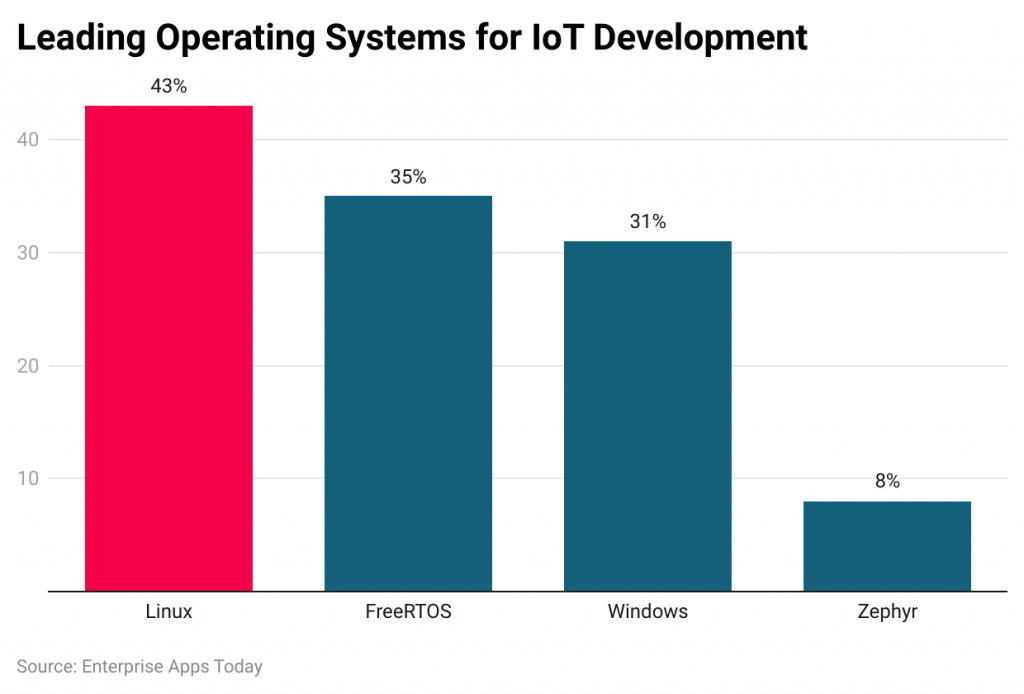
(Reference: 99firms.com)
The widely used operating system for developing applications is Linux resulting in 43%, followed by FreeRTOS (35%), Windows (31%), and Zephyr with only 8% of share.
By Industrial IoT Market by Region
| Regions | Revenue Share in 2023 (%) |
| North America | 34% |
| Asia Pacific | 25% |
| Europe | 29% |
| Latin America | 7% |
| MEA | 5% |
(Source: precedenceresearch.com)
In 2022, North America dominated the market in terms of total revenue by capturing 34% of the share, followed by Asia Pacific and Europe at 25% and 29% respectively. However, Latin America and MEA could contribute only 7% and 5% each.
Internet of Things Statistics by Sector
- The worldwide IoT-based healthcare market is expected to reach $14 billion by 2024 growing at a CAGR of 19.9% in the coming 5 years.
- By 2027, the IoT device market is projected to touch $1.4 trillion.
- 30% of the total IoT value is captured by the hardware market.
- In 2024, the total number of smart homes in the United States of America is estimated to reach 69.91 million, which further reach 93.59 million by 2027.
- Internet of Things Statistics state that by 2032, the industrial IoT market will reach $1,562.35 billion around the globe.
- In 2022, the manufacturing segment captured the largest share resulting in 30%, of the total industrial IoT market.
- In 2023, the worldwide connected vehicle shipments were expected to reach 76.3 million units with a projected growth at a YoY of 45.4%.
- In 2023, the globally connected home appliance market by machine-to-machine connections was expected to capture 48%.
- The agricultural IoT market was expected to reach $4.55 billion in 2022.
- By 2022, the Internet of Medical Things was expected to amount to $158.1 billion.
Number of Active IoT Devices
|
Region |
2023 |
2030 |
Change |
Change (%) |
|
Greater China |
5.04 billion |
8.57 billion |
↑ 3.53 billion |
↑ 70.04% |
|
Europe |
3.48 billion |
6.56 billion |
↑ 3.08 billion |
↑ 88.51% |
|
North America |
3.22 billion |
6.24 billion |
↑ 3.02 billion |
↑ 93.79% |
|
Japan |
0.93 billion |
1.77 billion |
↑ 0.84 billion |
↑ 90.32% |
|
Latin America |
0.64 billion |
1.54 billion |
↑ 0.9 billion |
↑ 140.63% |
|
South Korea |
0.38 billion |
0.62 billion |
↑ 0.24 billion |
↑ 63.16% |
|
South East Asia |
0.35 billion |
1.04 billion |
↑ 0.69 billion |
↑ 197.14% |
|
Russia and Central Asia |
0.29 billion |
0.66 billion |
↑ 0.37 billion |
↑ 127.58% |
|
Middle East and North Africa |
0.28 billion |
0.73 billion |
↑ 0.45 billion |
↑ 160.71% |
|
India and South Asia |
0.28 billion |
1.03 billion |
↑ 0.75 billion |
↑ 267.86% |
|
Sub-Saharan Africa |
0.1 billion |
0.26 billion |
↑ 0.16 billion |
↑ 160% |
(Source: explodingtopics.com)
The top three regions with the leading number of IoT active devices in 2023 are Greater China (5.04 billion), Europe (3.48 billion), and North America (3.22 billion), and are expected to stay at the top by 2030 as well.
Global Internet of Things Connections By Application
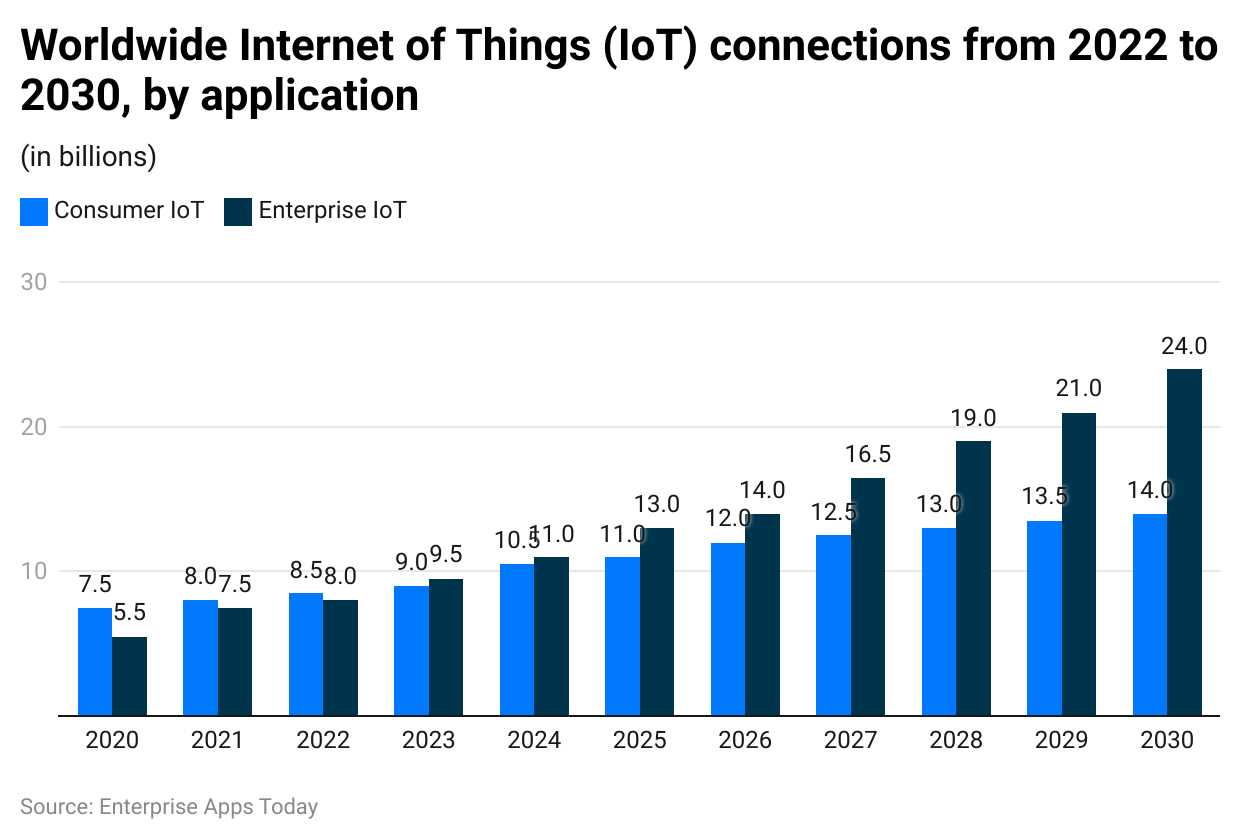
(Reference: statista.com)
According to the Internet of Things Statistics, Enterprise IoT is expected to contribute more as compared to consumer IoT. By 2024, each of these will reach 10.5 billion and 11 billion respectively further booming to 14 and 24 billion each by 2030.
By Adoption Rate
The following table displays the leading IoT adoption rate worldwide according to the use case:
| Use Case | Share of Adoption Rate Globally |
|---|---|
| Remote asset monitoring(read-only) | 34% |
| Process automation | 33% |
| Remote asset monitoring and control (read/write) | 32% |
| Vehicle fleet management | 31% |
| Location tracking | 31% |
| Asset/Plant performance optimization | 31% |
| Quality control and management | 30% |
| Goods condition monitoring in transit | 29% |
| Predictive maintenance | 29% |
| On-site track and trace | 29% |
(Source: demandsage.com)
According to reports, today, remote asset monitoring devices (read-only) have the highest adoption rate around the globe resulting in 34%, followed by process automation (33%) and remote asset monitoring and control (read/ write) at 32%.
Furthermore, other devices with almost similar percentages of adoption are vehicle fleet management, location tracking, asset/plant performance optimization, quality control, and management, goods condition monitoring in transit, predictive maintenance, and onsite track and trace.
By Level of Awareness
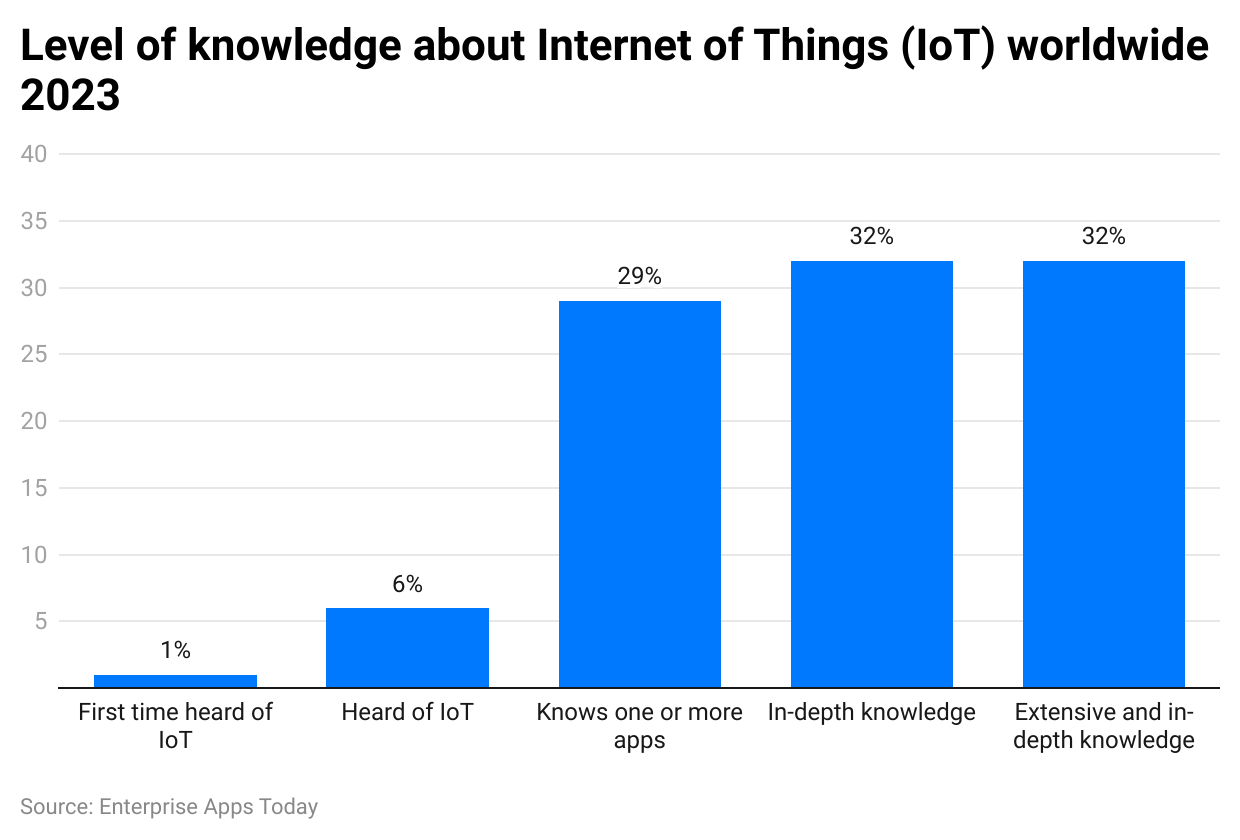
(Reference: statista.com)
As of 2023, around the globe, there are around 32% of people have extensive and in-depth knowledge about IoT, compared to 29% who know few apps. Only 6% of them the people have 6 heard about the term and 1% said they came to know about this for the first time.
By Worldwide Spending
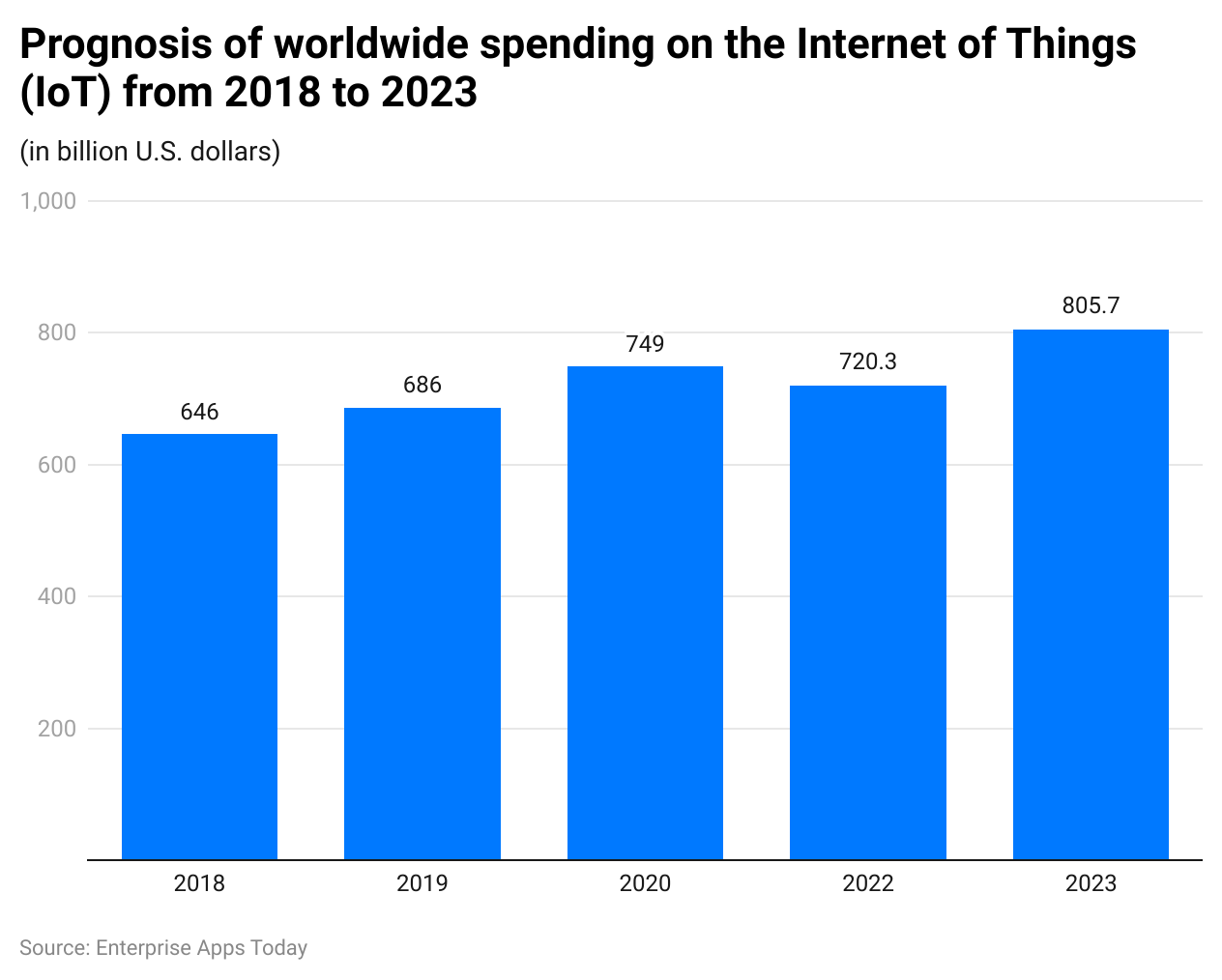
(Reference: statista.com)
As of 2023, the global spending on the Internet of Things was USD 805.7 billion. Even during the pandemic, in 2020, the expenditure was more than expected resulting in USD 749 billion, however, it was reduced to USD 720.3 billion in 2022.
By IoT Connections
IoT connections (billion)
| IoT | 2023 | 2029 | CAGR |
|---|---|---|---|
| Wide-area IoT | 3.3 | 6.6 | 12% |
| Cellular IoT2 | 3.0 | 6.1 | 12% |
| Short-range IoT | 12.4 | 32.3 | 17% |
| Total | 15.7 | 38.9 | 16% |
(Source: ericsson.com)
According to the Internet of Things Statistics, as of 2023, the total Wide-area IoT connections were 3.3 billion and are expected to reach 6.6 billion by 2029 growing at a CAGR of 12%. Similarly, cellular IoT will grow at 12% CAGR reaching 6.1 billion. However, the short-range IoT is considered the largest with 32.3 billion connections growing at a CAGR of 17%.
By Popular Connectivity Protocols for IoT
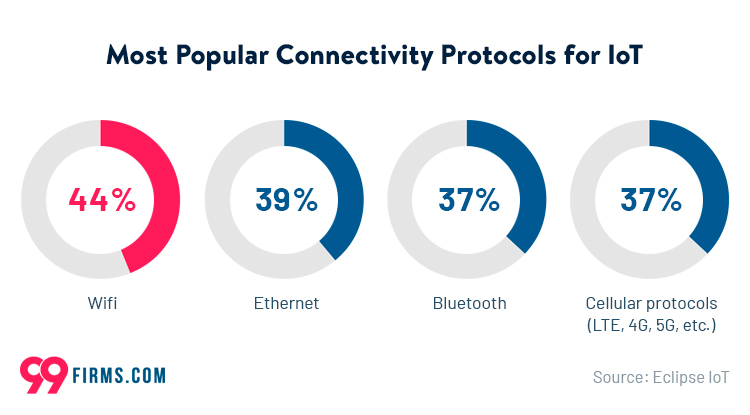
(Source: 99firms.com)
As of today, WiFi is the most popular connectivity protocol for the Internet of Things, tailed by ethernet (39%), and Bluetooth (37%). Surprisingly, considering the global number of mobile phones connected to the internet, cellular protocols such as 4G,5G, and LTE contribute only 37%.
By Total Number of Smart Homes
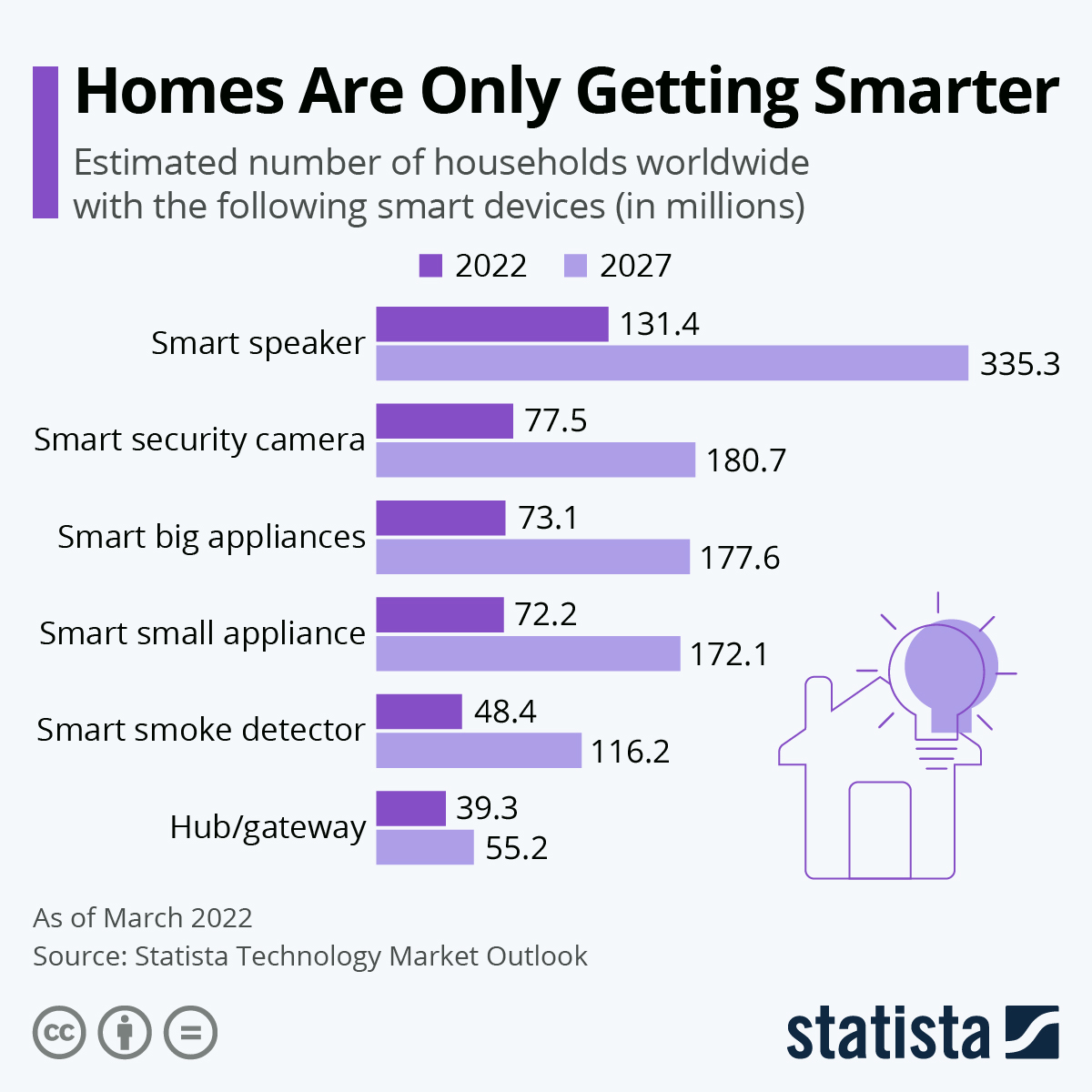
(Source: statista.com)
Considering the trend of being smart with everything, the majority of the households around the world, in 2022 owned smart speakers and are expected to remain at the top by 2027 resulting in 335.3 million. Other in-demand smart applications are security devices, big appliances, small appliances, smoke detectors, and hub/gateways.
By Total Annual Revenue From 2020 to 2030
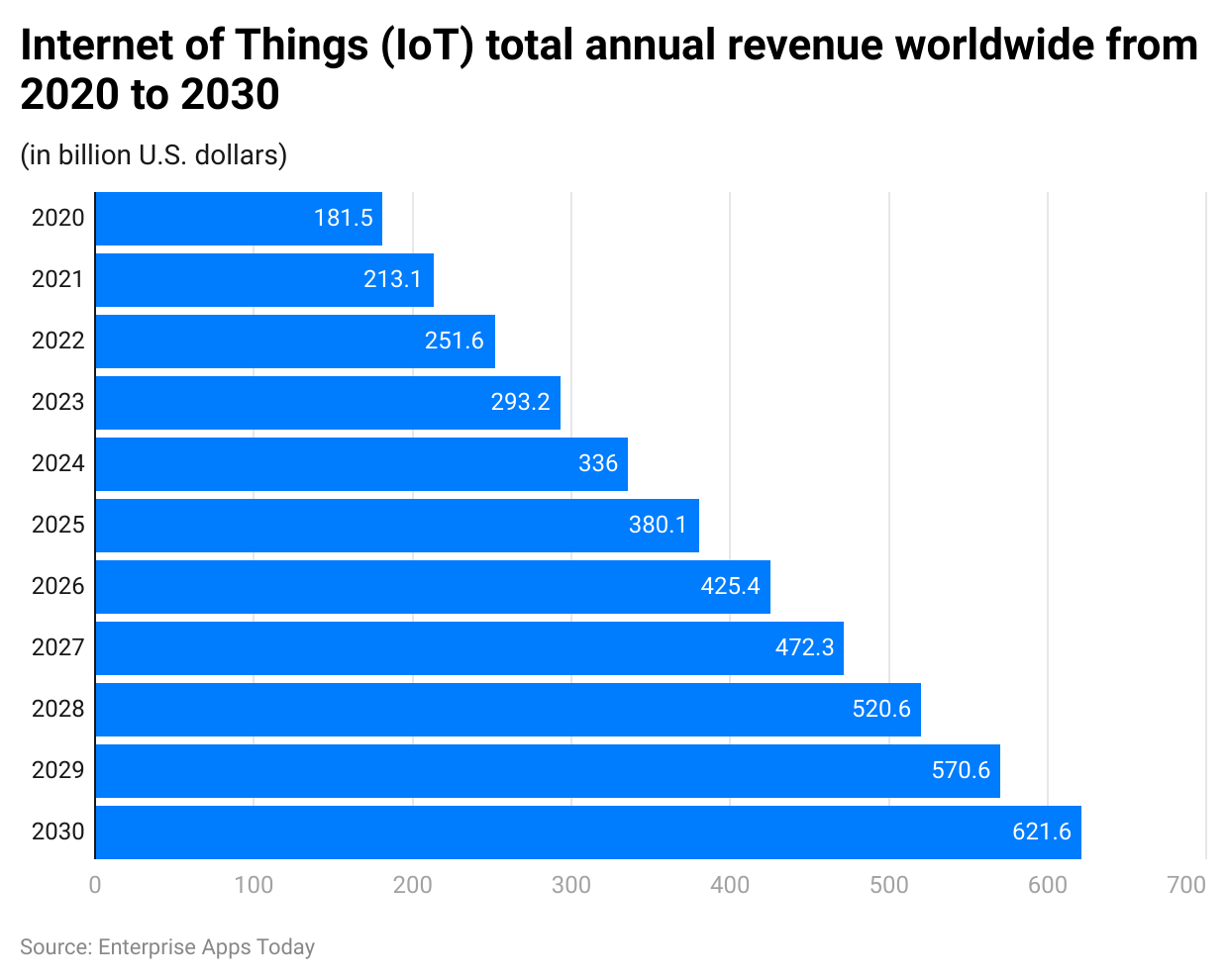
(Reference: statista.com)
The above chart explains the total revenue of the Internet of Things around the world annually. The market is expected to grow continuously, and thus result in increased revenue year by year. By 2024, the revenue is expected to reach USD 336 billion, and considering the rate of growth it will reach to whooping USD 621.6 billion by 2030.
Conclusion
Imagine your life before the Internet of Things. People were enjoying outside the home playing in the garden. But these IoT terms changed the world in both positive and negative ways. We are not connected with everyone in the world today, but that has turned us into the couch potato. On the other hand, technology is helping our homes become smart homes.
We are living in a world where books are not being sold in audio forms, cities are becoming smarter, mobile phones are turning into smartwatches, and whatnot. As proven by Internet of Things Statistics every possibility of such developments is changing our lives for sure.
FAQ.
Commonly used IoT devices being used today are motion detection devices, home voice controllers, industrial security and safety devices, home security devices, indoor safety sensors, and AR and VR headsets. Furthermore, this term also includes software, sensors, and the exchange of data over the Internet. Today, IoT devices are being classified into industries, military, consumers, and commercial.
The global IoT market is expected to grow at a CAGR of 15.9%.
Following are the trends of IoT to be considered in 2024 and beyond
- Enhanced AI tools, and support for IoT data analytics
- Enhanced uses in industrial IoT cases
- Lower costs for IoT-related raw materials
- Increased connectivity for IoT devices around the world
- And more technological developments

Barry is a lover of everything technology. Figuring out how the software works and creating content to shed more light on the value it offers users is his favorite pastime. When not evaluating apps or programs, he's busy trying out new healthy recipes, doing yoga, meditating, or taking nature walks with his little one.